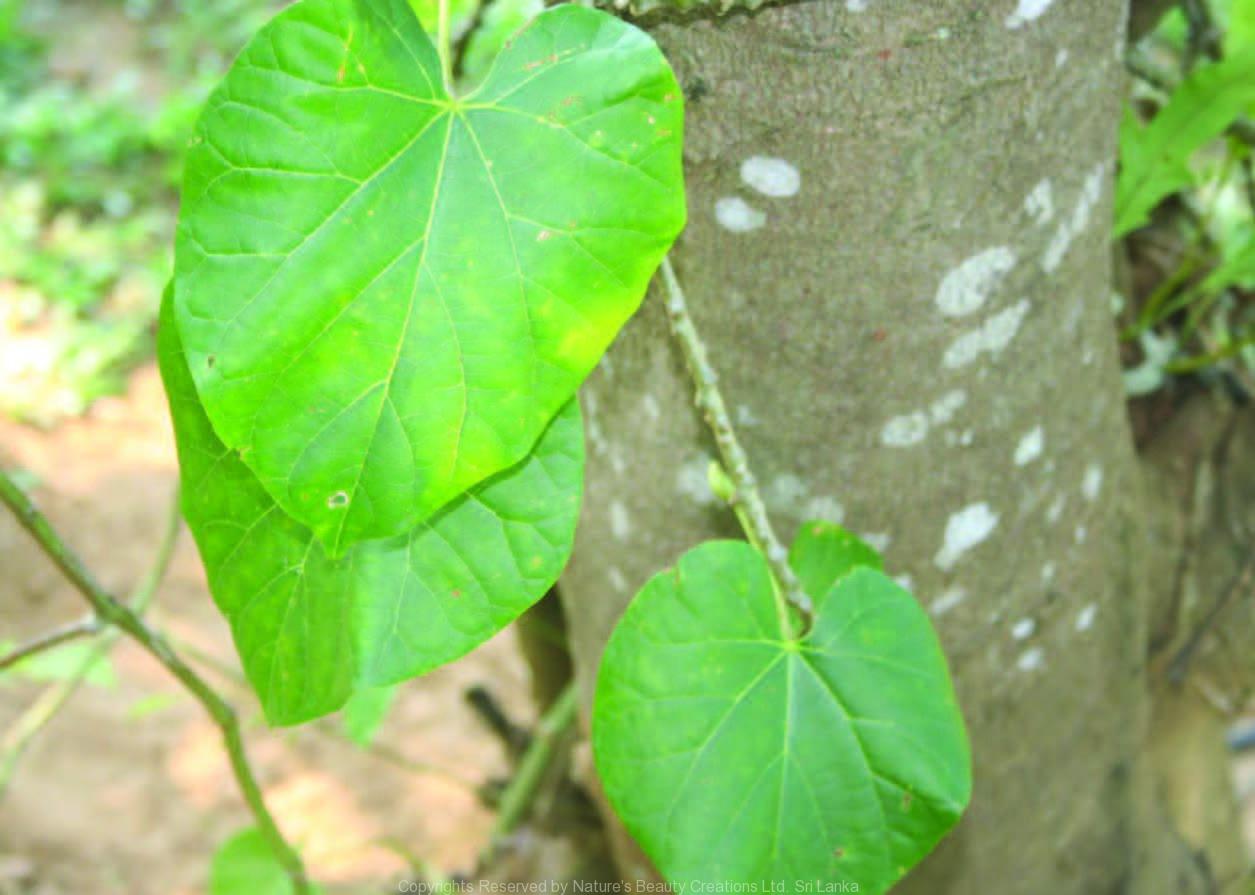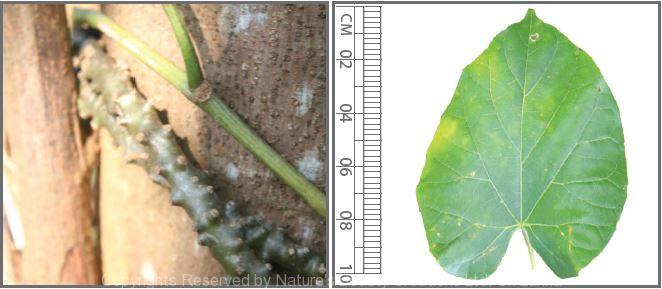

Traditional Knowledge
Useful plant parts :
Whole plant and stem
Uses in traditional medicine :
- Decoction of mature stem is taken for indigestion
- Fresh juice of the whole plant mixed with King coconut oil is applied on rheumatic joints
- Whole plant is used to treat fever, flatulence, ulcer and cancerous wounds
Scientific Research
Chemical constituents:
Triterpenes: cycloeucalenol, cycloeucalenone from dried stem; lignan: secoisolariciresinol, phenolic aldehyde: vanillin, phenylpropanoid glycosides: syringin, diterpene derivatives: borapetosides A, B and C, nucleosides: adenosine, uridine, isoquinoline alkaloid: salsolinol, N-formylnornuciferin monoamine: tyramine from plant
Bioactivity :
Ethanol, chloroform and aqueous extracts of stem: antibacterial, antinociceptive, anti-inflammatory, antihyperglycaemic, antiproliferative; secoisolariciresinol: antioxidative, radical scavenging activity; borapetosides: hypoglycaemic; adenosine, uridine, salsolinol, tyramine: hypotensive
Clinical:
Caution : Patients receiving Tinospora crispa may have increased risk of hepatic dysfunction
References : Cavin, A. et al., (1998), Antioxidant and Lipophilic Constituents of Tinospora crispa, Planta Med, 64(5), 393-396. Kongkathip, N. et al., (2002), Study on cardiac contractility of cycloeu- calenol and cycloeucalenone isolated from Tinospora crispa, Journal of Ethnopharmacology, 83, 95-/99. Lam, S. H. et al., (2012), Hypoglycemic diterpenoids from Tinospora crispa, J Nat Prod, 75(2), 153-9. Noor, H. and Ashcroft, S. J. H., (1998), Pharmacological characterisation of the antihyperglycaemic properties of Tinospora crispa extract, Journal of Ethnopharmacology, 62, 7–13. Praman, S. et al., (2012), Hypotensive and cardio-chronotropic constitu- ents of Tinospora crispa and mechanisms of action on the cardiovascular system in anesthetized rats, J Ethnopharmacol, 140(1), 166-78. Ruan, C. T. et al., (2012), Borapetoside C from Tinospora crispa improves insulin sensitivity in diabetic mice, Phytomedicine, 19(8-9), 719-24. Ruan, C. T. et al., (2013), Hypoglycemic action of borapetoside A from the plant Tinospora crispa in mice, Phytomedicine, 20(8-9), 667-75. Salaiman, M. R. et al., (2008), Antinociceptive and Anti-inflammatory Activities, International Journal of Tropical Medicine, 3(3), 66-69. Sangsuwan, C. et al., (2004), Randomized controlled trial of Tinospora crispa for additional therapy in patients with type 2 diabetes mellitus, J Med Assoc Thai, 87(5), 543-6. Zakaria, Z. A. et al., (2006), The in vitro Antibacterial Activity of Tinospora crispa Extracts, The Journal of Biological Sciences, 6(2), 398-401. Zulkhairi, A. et al., (2008), Biological Properties of Tinospora crispa (Akar Patawali) and Its Antiproliferative Activities on Selected Human Cancer Cell Lines, Malaysian Journal of Nutrition, 14(2), 173 – 187.
Copyrights Reserved By
Natures Beauty Creations




